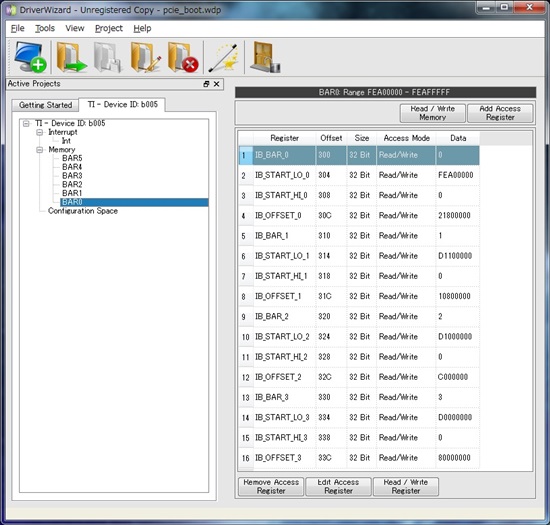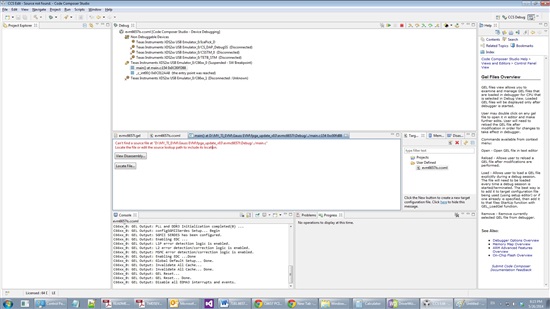I'm using TMSDEVM6657LS and TMDXEVMPCI.
I want to evaluate PCIe communication with windows PC.
I'm using "pdk_C6657_1_1_2_6\packages\ti\drv\exampleProjects\PCIE_exampleProject",
and build EP mode.
I develop windows driver by "http://www.xlsoft.com/en/products/jungo/windriver_usb_pci_driver_development_software.html".
But there is no information for this evaluation.
Could you tell me evaluation board setting (FPGA, Dip switch) , implementation, or some information.
-
Ask a related question
What is a related question?A related question is a question created from another question. When the related question is created, it will be automatically linked to the original question.



